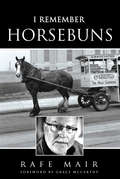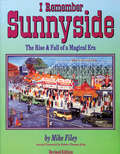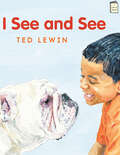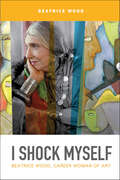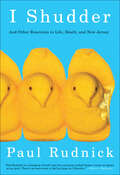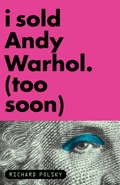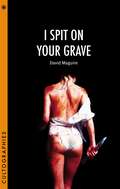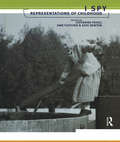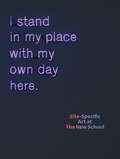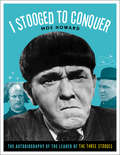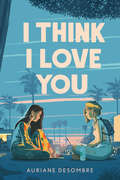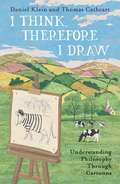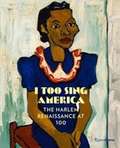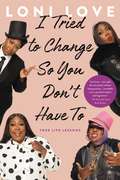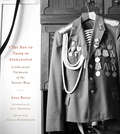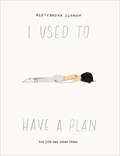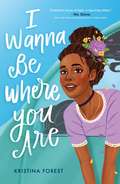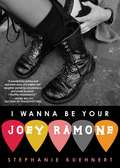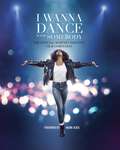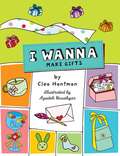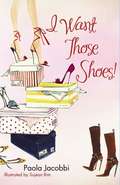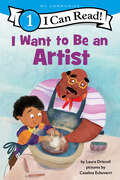- Table View
- List View
I Remember Horsebuns
by Rafe MairKnown to most as a polarizing figure in Canadian and British Columbian politics, and an outspoken voice in print and radio, Rafe Mair shares with his readers the side to him that is entirely human, relatable, and even loving in his latest memoir, I Remember Horse Buns. Above all, Rafe shares his love affair with Vancouver, British Columbia. Starting his tale in 1931, Rafe tells of exciting areas for kids to explore with minimal interference from parents. It was a time when there were actually streams you could fish in. It was the time of comic books, radio shows, and Saturday afternoon at the movies. Rafe relates the early days when he was forming thoughts on issues like the environment, free speech, and the press. He remembers the McCarthy era that started in Ottawa when a Soviet cipher clerk defected and Russia was no longer our Great Ally. He describes his love of books and writing, and he exposes Trotsky--Trotsky the bear, that is! Join Canadian best-selling author, recovering politician and renowned talk show host Rafe Mair as he remembers Vancouver, British Columbia, and Canada... and horse buns.
I Remember Sunnyside
by Mike FileyFirst published in 1982, I Remember Sunnyside is a mine of golden memories, bringing back to life an earlier Toronto, only hints of which remain today.Like the city itself, Sunnyside was an everchanging landscape from its heady opening days in the early 1920s to its final sad demolition in the 1950s. The book captures the spirit of the best of times a magical era which can only be recaptured in memory and photographs. It also presents the reality of a newer Toronto where change, although necessary, is sometimes regrettable.
I See and See (I Like to Read)
by Ted LewinAn observant boy sees many things on his way home from school. A dog, a truck, a bird, a butterfly. . . these ordinary urban experiences become artistic inspiration for the boy. When he gets home, he draws all of the things he saw. Now he can see them at home, too! Caldecott Honor medalist Ted Lewin’s magnificent, lifelike paintings transform the boy’s everyday walk into an enchanting exploration of his surroundings. Emerging readers will like the simple, repetitive text, and will challenge themselves to see what the boy sees—and more. An I Like to Read® book. Guided Reading Level B.
I Shock Myself: Beatrice Wood, Career Woman of Art
by Beatrice WoodIn her own charming, spirited, and readable style, Beatrice Wood tells us the story of her unorthodox life and her influence on 20th-century art. Rebellious, radical, and romantic, Wood (1893–1998) defied propriety to become a true national, and international, treasure. Her absorbing autobiography includes vintage documents and her own personal photos and sketches of her many famous friends and acquaintances in the art world. She became romantically involved with the Dadaist Marcel Duchamp, and offers rare glimpses into the lives of her circle, including key cultural figures like Constantin Brancusi, Isadora Duncan, Edna St. Vincent Millay, Anais Nin, and Krishnamurti. At age forty Wood studied ceramics and went on to become one of the major ceramists of the 20th century, working until her death at age 105. This captivating chance to enjoy Wood's rare charisma and spirit provides a better understanding of American art and the people who have shaped it.
I Shudder: And Other Reactions to Life, Death, and New Jersey
by Paul RudnickComic essays from the author of Farrell Covington and the Limits of Style: &“There&’s no book wiser or half as funny as I Shudder.&” —David Sedaris I Shudder is a side-splittingly funny collection of essays from Paul Rudnick, one of America&’s preeminent humorists—a playwright, screenwriter, novelist, and regular contributor to the New Yorker. The reviews say it all: &“A hilarious, often touching hodgepodge of essays about his work and his life with his pleasingly demented family.&” —People (4 stars) &“Uproariously self-deprecating essays about being gay and Jewish in suburban New Jersey and downtown Manhattan.&” —The New York Times Book Review &“A likable and accomplished raconteur who never loses sight of his own absurdity.&” —The Washington Post &“Smart, dishy, and very funny.&” —Daily News &“An acerbic and entertaining memoir.&” —Entertainment Weekly &“I Shudder is filled with deeply funny musings and adventures that elevate Paul Rudnick to the highest level of American comedy writing. It should be noted that I would be at the highest level of American comedy writing if I had had Paul&’s early advantages.&” —Steve Martin
I Sold Andy Warhol (Too Soon)
by Richard PolskyIn early 2005, Richard Polsky decided to put his much-loved, hard-won Warhol Fright Wig, up for auction at Christie's. The market for contemporary art was robust and he was hoping to turn a profit. His instinct seemed to be on target: his picture sold for $375,000. But if only Polsky had waited . . . Over the next two years, prices soared to unimaginable heights with multimillion-dollar deals that became the norm and not the exception. Buyers and sellers were baffled, art dealers were bypassed for auction houses, and benchmark prices proved that trees really do grow to the sky. Had the market lost all reason?In I Sold Andy Warhol (Too Soon), Polsky leads the way through this explosive, short-lived period when the "art world" became the "art market." He delves into the behind-the-scenes politics of auctions, the shift in power away from galleries, and the search for affordable art in a rich man's playing field. Unlike most in the art world, Polsky is not afraid to tell it like it is as he negotiates deals for clients in New York, London, and San Francisco and seeks out a replacement for his lost Fright Wig in a market that has galloped beyond his means. A compelling backdoor tell-all about the strange and fickle world of art collecting, I Sold Andy Warhol (Too Soon) takes an unvarnished look at how the industry shifted from art appreciation to monetary appreciation.From the Hardcover edition.
I Spit on Your Grave (Cultographies)
by David MaguireThere is no denying that Meir Zarchi’s I Spit on Your Grave (1978) deserves its title as one of the most controversial films ever made. While many condemn it as misogynistic, others praise it for raising uncomfortable issues about sexual violence. While its reputation as a cult film has undoubtedly been cemented by its unique position in the 1970s/80s exploitation era and the "video nasties" scandal, it has also become mythologized by its own official and unofficial franchises.David Maguire examines why the film still continues to provoke fierce debate forty years on, not only investigating the historical, social, and political landscape into which the film was first released—and condemned—but also examining how it is has inadvertently become ground zero for the rape-revenge genre because of its countless imitators. The book explores how academic study has reevaluated the film’s importance as a cultural statement on gender, the conflicting readings that it throws up, the timeless appeal of its story as examined through folklore and mythology, and its updating to reflect contemporary issues in a post-9/11 world of vengeance and retaliation.
I Spy DIY Style: Find Fashion You Love and Do It Yourself
by Jenni RadosevichLoved it on the runway? Seen it in a magazine? Find fashion you love and do it yourself! With a few simple supplies and a range of clever ideas, DIY expert Jenni Radosevich shows you how to make style your own. Transform your basics into designer fashions. Turn hardware store finds into statement necklaces or embellishments for a chic dress. Recreate red carpet-ready looks and add your personal touch. Filled with 30 step-by-step projects inspired by celebrities, designer runways, and classic styles, as well as tips from fashion insiders such as Rachel Roy, Olivia Palermo, and Rebecca Minkoff, I Spy DIY Style has everything you need for easy-to-make looks that will up your style quotient without sacrificing your budget.
I Spy: Representations of Childhood
by Catherine FehilyAttempting to address the photography of children in the late 1990s is a difficult and potentially dangerous exercise. _I Spy_ takes up the challenge by means of a unique combination of new colour and black and white photographs and newly commissioned writing. A book to savour, it addresses two related issues in the contemporary photography of children: how children photograph themselves and how they are portrayed by modern women photographers. It includes, for example, children's photographs of their homes, families and environment, a body of work on twins, a mother's photographs of her daughter and powerful essays expressing poetic, personal and critical approaches. Together, images and words describe intimate, surprising facets of the visual world of childhood.The contributors are: Melissa Benn, Linda Bullock, Wendy Ewald, Catherine Fahily, Jane Fletcher, Suzanne Greenslade, Patricia Holland, Holly Street Public Art Trust, Caroline Molloy, Kate Newton, Cath Pearson
I Stand in My Place With My Own Day Here: Site-Specific Art at The New School
by Frances RichardI Stand in My Place with My Own Day Here features essays by more than fifty renowned international writers who consider thirteen monumental works of art created for The New School between 1930 and the present. The nucleus of The New School's Art Collection, these commissions—ranking among the finest site-specific works in New York City—range from murals by José Clemente Orozco and Thomas Hart Benton to installations by Agnes Denes, Kara Walker, Alfredo Jaar, Glenn Ligon, Sol LeWitt, and Martin Puryear + Michael Van Valkenburgh, among others. Providing a kaleidoscopic view into these works, this richly illustrated volume explores each installation through three to four essays written by critics, poets, and scholars from diverse fields including anthropology, mathematics, art history, media studies, and design. Their texts are complemented by three additional essays reflecting on each piece's art historical significance; the architectural contexts in which the works reside on the university's campus; and The New School's relationship to adventurous art practice. Also included is a roundtable discussion among leading arts educators and artists who reflect on the pedagogical potential of a campus-based contemporary art collection. The book's final section presents a history of each commissioned work, highlighted by archival images never before published. Published by The New School. Distributed by Duke University Press. Contributors. Saul Anton, Daniel A. Barber, Stefano Basilico, Carol Becker, Naomi Beckwith, Omar Berrada, Gregg Bordowitz, Tisa Bryant, Holland Cotter, Mónica de la Torre, Aruna D'Souza, Elizabeth Ellsworth, Julia L. Foulkes, Andrea Geyer, Kathleen Goncharov, Jennifer A. González, Michele Greet, Randall Griffey, Victoria Hattam, Pablo Helguera, Jamer Hunt, Anna Indych-López, Luis Jaramillo, Jeffrey Kastner, Robert Kirkbride, Lynda Klich, Carin Kuoni, Sarah E. Lawrence, Tan Lin, Lucy R. Lippard, Laura Y. Liu, Reinhold Martin, Shannon Mattern, Lydia Matthews, Maggie Nelson, Olu Oguibe, G. E. Patterson, Hugh Raffles, Claudia Rankine, Jasmine Rault, Heather Reyes, Frances Richard, Silvia Rocciolo, Carl Hancock Rux, Luc Sante, Mira Schor, Eric Stark, Radhika Subramaniam, Edward J. Sullivan, Roberto Tejada, Otto von Busch, Wendy S. Walters, Jennifer Wilson, Mabel O. Wilson
I Stooged to Conquer: The Autobiography of the Leader of the Three Stooges
by Moe HowardTelling the full story of the head Stooge, this work reveals the life-long career of a legendary funnyman. Born into a working-class family in Brooklyn, Moe Howard transformed his real-life experiences of getting into mischief with his brother Shemp into the plots that would have millions rolling in the aisles. From childhood, Moe's ambition was to perform--whether it was plucking a ukulele on the beach, or playing a halfwit on a Mississippi showboat. But he only found success when he joined with Shemp and Larry Fine to play, as the New York Times put it, "three of the frowziest numskulls ever assembled." As the brains behind the Three Stooges, he went on to act in hundreds of their movies, introducing his little brother Curly into the act when Shemp departed, and, after Curly's death, partnering with Joe Besser and finally Joe de Rita. This is Moe Howard's self-penned, no-holds-barred story of the ups and downs of his life, ranging from personal family tragedies to tidbits about career mishaps and triumphs. It overflows with the easygoing charm, generosity, and inspired lunacy of the "wise guy" behind America's most successful comedy trio.
I Think I Love You (Underlined Paperbacks)
by Auriane DesombreA YA contemporary rom com about two girls who start as rivals but after a twist of events, end up falling for one another--at least they think so. A pitch perfect queer romance--and it's a paperback original!Arch-nemeses Emma, a die-hard romantic, and more-practical minded Sophia find themselves competing against one another for a coveted first-prize trip to a film festival in Los Angeles . . . what happens if their rivalry turns into a romance? For fans of Becky Albertalli's Leah on the Offbeat, full of laugh-out-loud humor and make-your-heart-melt moments.Underlined is a line of totally addictive romance, thriller, and horror paperback original titles coming to you fast and furious each month. Enjoy everything you want to read the way you want to read it.
I Think, Therefore I Draw: Understanding Philosophy Through Cartoons
by Thomas Cathcart Daniel KleinWhat makes you think you know what you think you know? What if your right is my wrong? Is it now yet? Like the best comedians, the best cartoonists address philosophy&’s Big Questions. Covering topics as diverse as religion, gender, knowledge, morality and the meaning of life (or the lack thereof), I Think, Therefore I Draw is a joyous introduction to the major debates in philosophy through history and the present. Wittgenstein once said that a serious and good philosophical work could be written that would consist entirely of jokes. Let&’s put that to the test…
I Too Sing America: The Harlem Renaissance at 100
by Wil Haygood<p>Winner of the James A. Porter and David C. Driskell Book Award for African American Art History, I Too Sing America offers a major survey on the visual art and material culture of the groundbreaking movement one hundred years after the Harlem Renaissance emerged as a creative force at the close of World War I. <p>It illuminates multiple facets of the era--the lives of its people, the art, the literature, the music, and the social history--through paintings, prints, photography, sculpture, and contemporary documents and ephemera. The lushly illustrated chronicle includes work by cherished artists such as Romare Bearden, Allan Rohan Crite, Palmer Hayden, William Johnson, Jacob Lawrence, Archibald Motley, and James Van Der Zee. <p>The project is the culmination of decades of reflection, research, and scholarship by Wil Haygood, acclaimed biographer and preeminent historian on Harlem and its cultural roots. In thematic chapters, the author captures the range and breadth of the Harlem Reniassance, a sweeping movement which saw an astonishing array of black writers and artists and musicians gather over a period of a few intense years, expanding far beyond its roots in Harlem to unleashing a myriad of talents upon the nation. The book is published in conjunction with a major exhibition at the Columbus Museum of Art.</p>
I Tried to Change So You Don't Have To: True Life Lessons
by Loni LoveAn inspiring, hilarious memoir about learning to resist the pressures of conformity, love yourself for who you are, embrace your flaws, and unlock your true potential.Now cohost of Fox's The Real and SiriusXM's Café Mocha, Loni Love hasn't taken the typical path to becoming America's favorite straight-talking girlfriend and comedian. She was not the child of Hollywood legends and she never wore a size 00. Rather, she grew up in housing projects in Detroit, more worried about affording her next meal than going on a diet. When she moved to Hollywood after graduating college with an engineering degree, seeking to break out in the entertainment world, there was nothing that would convince her to eat the kale salads and quinoa bowls that her colleagues introduced her to, which looked to Love like "weeds my grandma used to pay me a dollar to pull from her yard."Still, despite the differences that set her apart in the status-driven world of entertainment where being thin, young, blond, and bubbly is sometimes considered a talent, Love spent years trying to fit in -- trying to style her hair just so, dieting, dating the men she thought she was supposed to be with. In this book, she tells the uproariously funny story of how she overcame the trap of self-improvement and instead learned to embrace who she was. As Love writes, "There's a saying a lot of people live by: 'Fake it till you make it.' For me, it's always been 'fake it, and then have the whole thing blow up in your face.'" I Tried to Change So You Don't Have To explores all of the embarrassing mistakes, terrifying challenges, and unexpected breakthroughs that taught her how, by committing ourselves to our own path, we can take control of our destiny.
I Try Not to Think of Afghanistan: Lithuanian Veterans of the Soviet War (NIU Series in Slavic, East European, and Eurasian Studies)
by Anna ReichI Try Not to Think of Afghanistan includes photographs and commentaries from Lithuanian veterans of the Soviet War in Afghanistan (1979–89), addressing the lasting realities of war and its effects on those conscripted to fight. Unflinching first-person accounts give details of training, combat, and the often difficult return to society for military conscripts within the Soviet system. Anna Reich gives insight into the experiences of not only the Lithuanian veterans from the Soviet War in Afghanistan but also veterans from all countries who face similar struggles and challenges.For three months, Reich interacted with twenty-two veterans in their homes and meeting halls and throughout their daily routines to produce portraits that provide intimate and unvarnished portrayals of their lives and the lasting effects of forced military service in the Soviet army. Often ostracized socially because of their involvement with the Soviet army, the veterans frequently feel invisible: there are no social programs to assist them in their attempts to address post-traumatic stress disorder and assimilate into society, their cause is largely unknown, and the government responsible for their conscriptions no longer exists.I Try Not to Think of Afghanistan is the culmination of eight years of investigation into the psychological toll of war and trauma. In providing a rarely seen perspective of life after combat, the book intersects with contemporary discourse, specifically the way the US experience in Afghanistan closely mirrors that of the Soviets and the Russian Federation's forced conscription of young men to fight in Ukraine.
I Used to Be a Design Student: 50 Graphic Designers Then, Now
by Billy KiosoglouThis book offers a rare chance to read what graphic designers feel about their education and profession. Fifty influential designers give the low-down about their student days and their professional lives. A piece of their college work is shown alongside an example of current work. Each designer also offers a key piece of advice and a warning, making this a must-read for anyone embarking on a career in design.The book looks at the process a designer goes through in finding their 'voice'. Topics addressed include how ideas are researched and developed; design and other cultural influences, then and now; positive and negative aspects of working as a designer; motivations for becoming a designer; and whether it's really possible to teach design. Contributors include Stefan Sagmeister, James Goggin, Karlssonwilker, Studio Dumbar, Cornel Windlin, Daniel Eatock, Spin, Hyperkit and Christian Küsters.
I Used to Be a Design Student: 50 Graphic Designers Then, Now
by Billy Kiosoglou Frank PhilippinThis book offers a rare chance to read what graphic designers feel about their education and profession. Fifty influential designers give the low-down about their student days and their professional lives. A piece of their college work is shown alongside an example of current work. Each designer also offers a key piece of advice and a warning, making this a must-read for anyone embarking on a career in design.The book looks at the process a designer goes through in finding their 'voice'. Topics addressed include how ideas are researched and developed; design and other cultural influences, then and now; positive and negative aspects of working as a designer; motivations for becoming a designer; and whether it's really possible to teach design. Contributors include Stefan Sagmeister, James Goggin, Karlssonwilker, Studio Dumbar, Cornel Windlin, Daniel Eatock, Spin, Hyperkit and Christian Küsters.
I Used to Have a Plan: But Life Had Other Ideas
by Alessandra OlanowBalm for the soul—Alessandra Olanow offers advice, inspiration, and encouragement for anyone who needs a shoulder to lean on during a difficult time.“I Know This Too Shall Pass. (But It Would Be Helpful to Know When).”After a series of events left her a divorced single mother questioning herself, her relationships, and basically, everything she thought was true about her “picture-perfect” life, Alessandra Olanow began drawing and posting illustrations on Instagram that reflected her feelings and struggles to right her life. She chronicled her journey of healing, expressing the shock, delusion, denial, self-pity, and self-doubt she experienced and the self-empathy and forgiveness that ultimately helped her regain a sense of self—but stronger, more fearless, and more hopeful than before. Her charming illustrations and keen, memorable observations—struck a chord. Within a year, her audience grew dramatically, from 9,500 to 157,000 followers, including celebrities Katie Couric, Jennifer Garner, Elise Loehnen (chief content officer at Goop), the poet Joao Doederlein, and Joanna Goddard (founder of A Cup of Jo). I Used to Have a Plan brings Olanow’s soothing sensibility to a wider audience, featuring new drawings and ideas that touch upon the universal experiences of unexpected change and loss. Divided into five parts—“I Didn’t See That Coming,” “It’s OK That You’re Not OK,” “Where’d I Go,” “The Only Way Out Is Through,” and “I Like It Here, Can I Stay a While?”—the book beautifully encapsulates the experience of encountering difficulty, processing it and healing from it, and becoming stronger and with a better sense of self. Full of advice, commiseration, empathy, and wit that is comforting, helpful, direct, and remarkable in its truth, I Used to Have a Plan helps everyone through the painful yet ultimately uplifting process of healing.I Used to Have a Plan includes 75-100 illustrations.
I Wanna Be Where You Are
by Kristina ForestA debut young adult rom-com about an African American ballerina who finds love on the road to an audition."In a world where it's easy to lose faith in love, I Wanna Be Where You Are is a brilliant burst of light. A dazzling debut." — Nic Stone, New York Times bestselling author of Dear Martin and Odd One OutWhen Chloe Pierce’s mom forbids her to apply for a spot at the dance conservatory of her dreams, she devises a secret plan to drive two hundred miles to the nearest audition. But Chloe hits her first speed bump when her annoying neighbor Eli insists upon hitching a ride, threatening to tell Chloe’s mom if she leaves him and his smelly dog, Geezer, behind. So now Chloe’s chasing her ballet dreams down the east coast—two unwanted (but kinda cute) passengers in her car, butterflies in her stomach, and a really dope playlist on repeat.Filled with roadside hijinks, heart-stirring romance, and a few broken rules, Kristina Forest's I Wanna Be Where You Are is a YA debut perfect for fans of Jenny Han and Sandhya Menon.
I Wanna Be Your Joey Ramone
by Stephanie KuehnertA raw, edgy, emotional novel about growing up punk and living to tell. The Clash. Social Distortion. Dead Kennedys. Patti Smith. The Ramones. Punk rock is in Emily Black's blood. Her mother, Louisa, hit the road to follow the incendiary music scene when Emily was four months old and never came back. Now Emily's all grown up with a punk band of her own, determined to find the tune that will bring her mother home. Because if Louisa really is following the music, shouldn't it lead her right back to Emily?
I Wanna Dance with Somebody: The Official Whitney Houston Film Companion
by Weldon OwenThe film I Wanna Dance with Somebody tells the joyous, emotional, and heartbreaking story of Whitney Houston's journey from obscurity to musical super stardom. This stunning accompanying volume tells the story of bringing Whitney's life to the big screen, with behind-the-scenes photography and interviews with key cast members including star Naomi Ackie (Star Wars: The Rise of Skywalker), Tamara Tunie (Flight, The Devil&’s Advocate), and Nafessa Williams (Black Lightning), as well as key members of the production crew. Learn how the pivotal moments and places in Whitney's history, as well as her spectacular wardrobe and her look, were recreated for the film, with additional insight about the film from director Kasi Lemmons and about Whitney herself from producer Pat Houston. It is the ultimate book for the Whitney Houston fan. A BEHIND-THE-SCENES LOOK: Rare production stills and behind-the-scenes photography show how a monumental movie like this is made. INTERVIEWS WITH STARS AND CREW give an intimate portrait of what it was like to portray people such as Whitney Houston and Robyn Crawford, and what it took to re-create those characters with hair, makeup, and costume. OFFICIAL MOVIE TIE-IN with exclusive content including production and film stills, interviews, and script excerpts.
I Wanna Make Gifts
by Clea Hantman Azadeh HoushyarThe only thing better than getting gifts is giving them, especially when they're homemade. In this book Clea Hantman creates objets d'art that scream "Give me to someone you love!" We're talking Lovely Luggage Tags, Happy Little Hand Warmers, Pet First-Aid Kits, and oh-so-much more. Azadeh Houshyar, Clea's trusty artistic sidekick, adds a hearty dose of color and spice and everything nice to make this book more irresistible than a warm mug of frothy cocoa on a chilly day. (Speaking of, did we mention the Haute Hot Choco Kit?) You know, even the book itself makes a fab gift! *Warning: Gratuitous hugging and kissing might follow.
I Want Those Shoes
by Paola Jacobbi"Shoes possess magical properties," writes Italian journalist and shoe fanatic Paola Jacobbi. The allure of shoes is so powerful that they have become her fashion obsession, one she shares with millions of women, from Imelda Marcos to Sarah Jessica Parker to Joan Crawford. Here Jacobbi indulges that obsession by embarking on a witty and highly opinionated journey through the styles and cultural significance of women's footwear and our attachment to it. Jacobbi pontificates (sandals are the bikini of footwear); psychoanalyzes (the relationship between shoes and sex); has fiery beliefs (ankle boots are quite simply a no-no); and speculates (there's a little Imelda in all of us). She also offers plenty of sage advice: how to choose the right heel for your physique, how to keep shoes lasting long, why to avoid mules at all costs, and how to judge a man by his footwear. Charming, sassy, and irresistible, I Want Those Shoes! will be a perfect fit for every woman who has ever coveted, rearranged her closet to accommodate, or maxed out her credit card for one more absolutely-gotta-have-it pair of shoes.
I Want to Be an Artist: A My Community I Can Read (I Can Read Level 1)
by Laura DriscollA Level 1 I Can Read story for the child who says, “I want to be an artist when I grow up!” And for any child interested in many ways people can have a career making art.Visit art shows and workspaces with Papa and his grandchild, soaking in all the art along the way, in this Level 1 I Can Read My Community book ideal for early readers learning to sound out words and sentences. Find out more about the community helpers who do so much for us in this 9th book in the I Can Read My Community series full of characters who are diverse in terms of gender, race, age, and body type. Whether shared at home or in a classroom, the short sentences, familiar words, and simple concepts of Level One I Can Reads support success for children eager to start reading on their own.Meet these artists: paintersculptorhand-lettering artistpottergraphic designerphotographerillustratoranimatorcartoonistbotanical illustratormuralist
